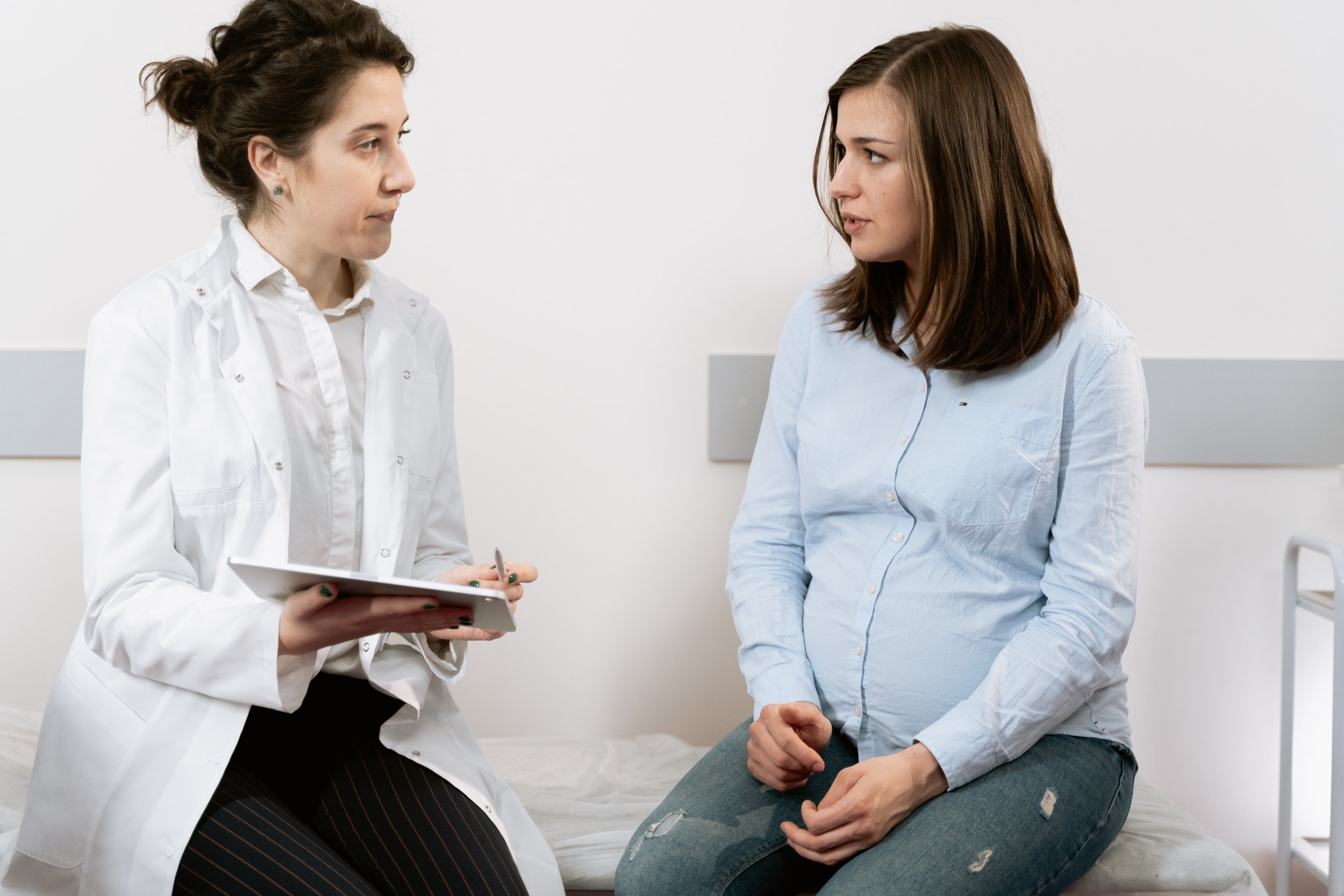Your Chronic Pelvic Pain Symptoms Explained and How to Find Relief
It’s a feeling you know all too well. Sometimes it’s a dull, aching pain. Sometimes it feels like a burning, stinging pain. It can be the worst after a long day of sitting. And it never really goes away for any relieving period of time, does it?
Then your partner gives you a look. You know the one…
“Hey, the kids are asleep; work is done, so now it’s our time.”
And you feel a sense of dread in the pit of your stomach, and panic starts to creep in. You’ve been here so many times before, but you still don’t know what to do.
Your partner catches the vibe and backs off. They’re like, “c’mon, let’s see what’s on Netflix.” And you feel waves of relief and also sadness. It shouldn’t be like this. How did pelvic pain hijack your life?
Trust me, I know.
Because I struggled with chronic pelvic pain (CPP) for over a decade – and all the emotional baggage that comes with it. I’ve helped women and vulva owners deal with pelvic pain just like you. And my experience has taught me that knowledge is power. Understanding what’s going on in your body is the first step to feeling empowered and taking control of your life back.
So let’s dive in, shall we?

What are the most common Chronic Pelvic Pain (CPP) symptoms?
Pelvic pain symptoms can vary quite a bit. And everyone’s experience is unique. No two pain warriors are on the same journey.
So what do we know about chronic pelvic pain symptoms?
Well the most simple thing I can say is: it depends on what’s causing it. And for it to be considered “chronic” it has to have lasted for more than 6 months (even if it’s off and on pain).
Endometriosis and adenomyosis will have different pain symptoms than someone with vulvodynia or vaginismus. People with lichen sclerosis will experience something slightly different still.
But all do share some physical pain symptoms in common.
Often, urinary or bowel issues come into play with these pain conditions as well. They share similar real estate, so it makes sense that complications with urination or bowel movements can also affect pelvic pain patients.
Your pain may be in one particular spot on the vulva or vaginal opening. But many folks report pain over their entire groin and hip area.
A few things can cause the symptoms, and likely a combination of the following:
- Insufficient lubrication/arousal
- Chronic infections (bacterial vaginosis, yeast, UTIs)
- Overly sensitized vaginal/vulvar nerve endings
- Tight pelvic floor muscles (hypertonic pelvic floor)
- Thinning vulvar tissue (from hormonal imbalances)
- Skin conditions or sensitivities
- Fear or anxiety around sex
- Scar tissue developing in/around/outside of the uterus
And, of course, we can’t talk about pelvic pain without mentioning painful intercourse, which is really painful penetration. 1
So it doesn’t just affect your sex life or the relationship with your partner. Pelvic pain symptoms may prevent you from using a tampon or getting regular exams from your gynecologist.
Even if you’re currently single, getting the answers you need is a priority. Your health is on the line. And getting the pain relief you deserve will dramatically improve your overall happiness and sense of well-being.

Is it normal to have pelvic pain during or after pregnancy?
Have a baby, they said. You’ll be glowing, they said.
You read all the books, followed the experts on social media, and watched the YouTuber moms who make it look so easy. So why didn’t anyone give you a heads up about swollen feet, having to pee every 10 minutes, and, worst of all – pelvic pain during and after pregnancy?
When you’re pregnant, it’s so easy to freak out over every bit of discomfort. It’s a constant assessment…
Is the baby ok? Am I ok?
These worries can be challenging, especially for first-time moms who don’t know what to expect. Don’t worry. Your concern is entirely normal, and you’re doing great.
That being said, pelvic pain during pregnancy is pretty common. In fact, it affects 1 in 5 women.2 A lot is going on, and your body’s trying to figure out how to balance it all.
So what can you expect if you’ve been diagnosed with SPD (Symphysis Pubis Dysfunction)?
Every mom’s experience is different, so your pain can range from moderate to severe. Some feel discomfort across their lower back. But it’s usually concentrated in your groin area (between your vagina and anus).
What makes the pain worse? Things like walking, going up or down the stairs, leaning on one leg, and yes, even rolling over in bed. Sigh.
The good news is that SPD doesn’t affect the baby, making some moms feel they have to take one for the team and just suck it up. However, relief from pelvic pain during pregnancy is possible. Talk to your doctor about safe options for both you and the baby.
Your doctor may recommend things like:
- Pelvic physiotherapy
- Exercise in water
- TENS therapy
- Pelvic support belt
After you deliver, your body has to bounce back. Once everything’s healed (around the 6-8 week mark), it’s really important that you work with a pelvic floor physical therapist to retrain your pelvic floor muscles.
It’s not normal for your body to experience urinary leakage, abdominal cramps or tightness, or pain during intercourse after 8 weeks post-pregnancy. If you are, definitely talk to your obgyn and your physical therapist.

What are your best pelvic pain treatment options?
Now, you have an in-depth understanding of your symptoms. While you may or may not know where they came from, what you really care about is pain relief. I know because I was YOU.
So, how do you get started?
Step one: talk to your gynecologist.
Don’t be discouraged if you’ve already done that and their advice was less than helpful. Many doctors haven’t been trained on current best practices for pelvic pain treatment. And just because the gyno you’ve always gone to doesn’t have the answers doesn’t mean there aren’t any. Seek out sexual medicine providers who have taken advanced training on sexual functioning issues.
Your healthcare practitioner may prescribe medication to help manage your pelvic pain. Many women find relief with pain medication or even antidepressants. 3 If an infection is the culprit, a simple antibiotic can do wonders.
If your pain is related to your menstrual cycle or hormonal imbalances, hormone therapy or birth control pills may do the trick – but it’s really important to know exactly what your diagnosis is so that you don’t take something that will work against your condition.
I’m going to tell you something very disappointing—so many doctors and physical therapists completely ignore this step, even though it’s critical and research proves its effectiveness.4
Step two: Seek pelvic pain treatment with a physical therapist.
They have a deep knowledge of the muscles involved, so they can teach you specific exercises to strengthen and relax the area where you’re having issues.
Step three: address the emotional & relational impact.
So many patients skip this part, and after months (sometimes years) of addressing the medical and physcial treatment, they wonder why they still aren’t interested in sex, still fear the pain of penetration, and continue to feel awkward or uncomfortable when their partner wants to be intimate.
Many pain warriors find relief with psychotherapy. That’s because the mind-body connection is so strong, especially when it comes to sexuality because chronic pain is a trauma response. So it’s like having PTSD when it comes to sex. And it’s sooooo important to re-wire your brain so that you no longer fear sex, and in fact desire to have it again.
I’ve had over 17 years of training in sex therapy and pelvic pain treatment, and I’ve dedicated my entire career to helping women just like you find relief. I’ve developed techniques backed by solid neuroscience. I’m excited to share them in a free 4-day online course. Because you deserve to live pain-free – and I’m happy to show you how.
Or, you can get started now in our Overcoming Painful Sex Program.
Book a Consultation Call today
Book a Consultation Call today with our Founder and CEO, Kayna Cassard.
She’ll conduct an in-depth assessment and provide you with an individualized action plan you can start immediately.
If you’re ready for a step-by-step guide, exclusive content and techniques to use immediately, click below.